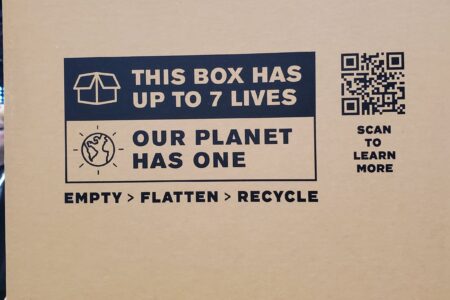The Power of Packaging

Image courtesy PMMI
In conversations, when asked what Tea & Coffee Trade Journal covers and I mention one of the categories is packaging, the response is usually a slight eye roll or raised eyebrows accompanied by a long utterance of “ohhh” that’s not-so-subtly masking an “oh, how boring” thought (whether the people I’m speaking with are “out of” or even “in” the industry). Oh, how wrong they are — packaging is far from boring! Even with previous publications where I covered a variety of categories, I always found packaging fascinating.
The global packaging machinery market has a compounded annual growth rate (CAGR) of 2.8%. This translates to a value of $42.2 billion by 2021, up from $36.8 billion in 2016, per PMMI’s (the Association for Packaging and Processing Technologies) The Global Trends Impacting the Market for Packaging Machinery report. Beverages is the second largest sector at 30% — behind the food segment at 40% (all other industries account for the additional 30%). Packaging is also an industry that is always evolving, with its role changing with the times.
Packaging’s primary role, first and foremost, is functional — it must protect the product inside from inception to end user (that is, from factory to consumer), and in the case of consumables, packaging must also ensure freshness. But packaging plays a prominent role in a brand’s viability and success, perhaps more so today than ever before. Packaging is a product’s first line of defense on the shelf – or online – against a sea of competitors. Packaging is a brand’s initial, crucial strategy to advertise a product to a consumer. A product’s packaging is the first thing a consumer sees so it must be eye catching enough to entice the consumer for those precious few seconds they’re walking down the aisle, even less if they’re searching online, to give a product more than just a cursory glance.
Packaging must convey the right message to consumers. During the “Great Recession,” a well-known national beverage brand (not coffee or tea) in the United States spent millions of dollars redesigning their longstanding, easily recognized packaging to look more minimalist only to have it fail miserably. Consumers didn’t like the redesign, nor did they understand what message the brand was trying to communicate with the new packaging. The unfortunate result? The brand had to return to a slightly updated version of their original packaging.
Beverage brands are now attempting to connect with consumers in new ways as the story, “Packaging Gets Personal,” in our October issue details. Coffee and tea brands can take a cue from carbonated soft drinks and spirits brands like Coca-Cola (its “Share a Coke” campaign called consumers by their names) and Johnnie Walker (the limited edition “Jane Walker” specifically targeted women), which are aiming to resonate with consumers on deeper levels.
Consumers, most especially millennials and Generation Z, are fickle. As such, brands need to connect and resonate with consumers on new levels, getting personal is just one strategy. Today, many brands are using packaging to tell a story.
“The codes on the packaging enable you to see where the product is sourced, which shows credibility, but now brands are not just using packaging to sell a product, they are telling a story and selling an experience,” Jorge Izquierdo, vice president, market development, PMMI, told me during Pack Expo International, which took place in Chicago, Illinois, 14-17 October. He said the “track and trace” strategy started in the pharmaceutical industry but moved to food and beverages because of food safety. “Brands are moving beyond the safety aspect with ‘track and trace’ to the idea of selling a story to truly understand what the brand/company is about, both of which are highly important to younger consumers,” Izquierdo explained.
Given how important transparency and traceability, as well as sustainability, are with coffee and tea consumers, it will be interesting to see how packaging in these industries will evolve over the next few years.



